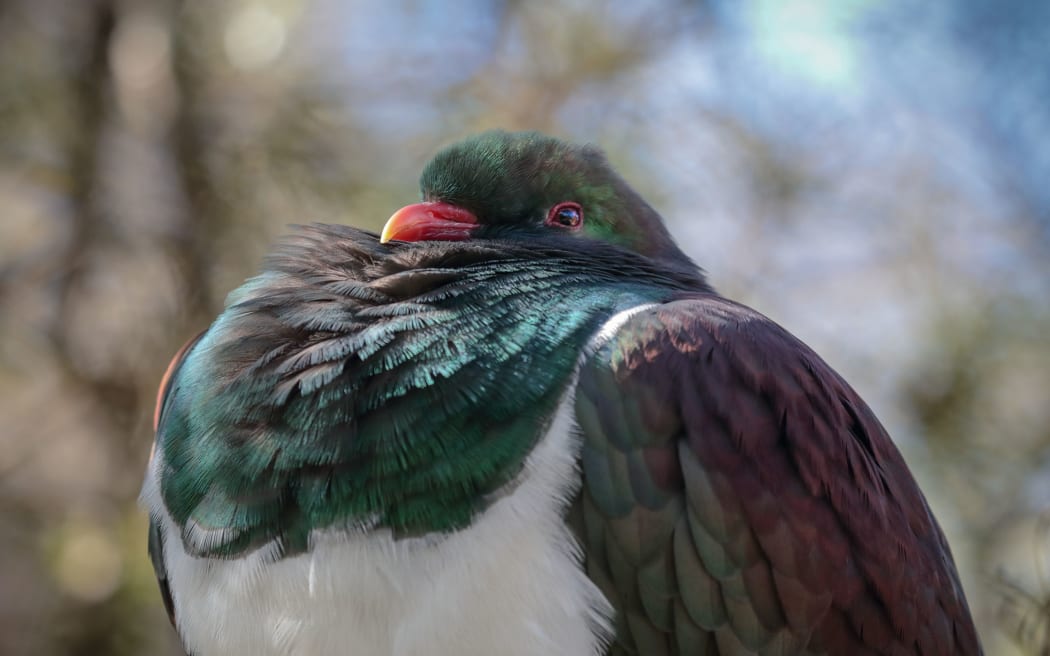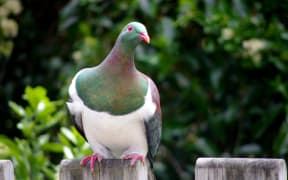Organisers of this year's annual kererū count say an increase in pests could mean it'll be a few years before the bird's population increases again.

Kererū leave their young alone for hours and they don't have the ability to fight off predators, an expert says. Photo: Supplied/ Tony Stoddard
Over the ten-day count New Zealanders reported seeing 14,248 kererū, almost 5000 fewer than last year's count.
The coordinator and director of Kererū Discovery, Tony Stoddard, said he'd heard from a lot of people who had noticed a drop off in bird numbers compared to other years.
However, he said it wasn't anything to worry about.
"I think basically what's happened is the fruits of the podocarps in the bush have actually been later, and more abundant with their fruiting seasons so the kererū seem to be staying away a lot further in the bush to feed on these trees before coming out into the urban environments."
However, this year's mast would also likely boost predator numbers who, having eaten all the seeds would be looking for other food sources.
"Through the breeding season is going to be a really tough time for them because we know there will be a lot more pests around. If they're not under control in certain areas basically you're looking at an 80 percent failure rate for a nest throughout that time. This will impact for next year definitely."
Older birds were able to fend off predators, he said, however younger birds were vulnerable.
"They stay in the nest for up to 39 days and once they get to about 14 days they're left alone for the whole day to try and fend for themselves and unfortunately they don't have the ability to fight off any predators.
"What we'll find is there might be a lower number of younger juveniles for the following season. Adult-wise we expect pretty much to be stable but it's just the newer generation so building upon the population that's already there at the moment might be a lot slower."
With kererū, which are slow breeders, any eggs or young kererū lost could have a big effect on growth.
"It could be extended for a few more years before we start to see any more increase in the population again."



